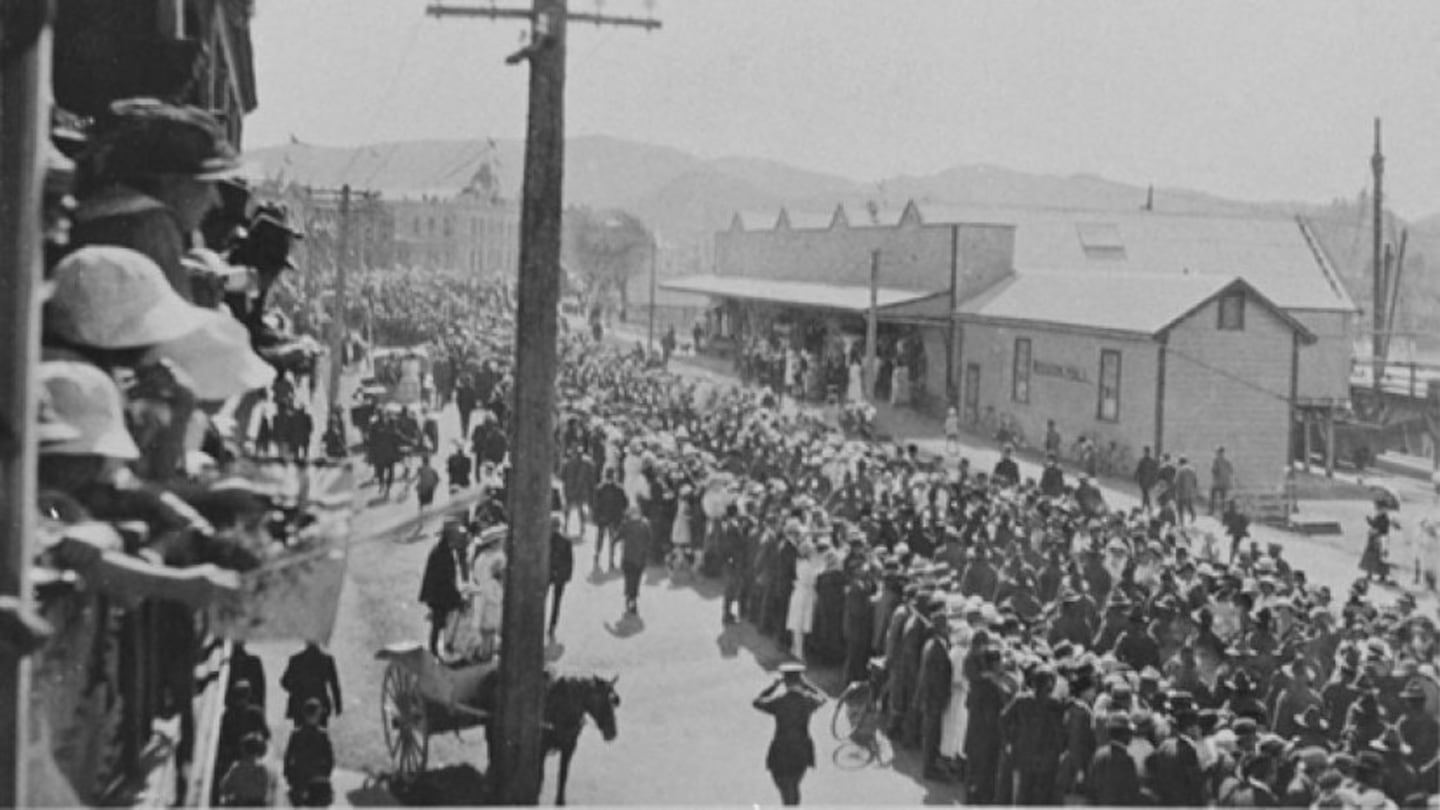Māori Pioneer Battalion soldiers parade along Gladstone Road, Gisborne. Source: Tairawhiti Museum, Gisborne
More than a thousand people are expected to attend a parade in Gisborne next month to honour Māori Pioneer Battalion soldiers.
As part of the event, an honour guard of 100 men will march through the town to mark a century since the Hui Aroha was held there.
The hui was held in 1919 to welcome home Māori Pioneer Battalion soldiers from the First World War, says Manatū Taonga Chief Historian Neill Atkinson.
“The parade echoes the Hui Aroha when shops and businesses closed for half a day and the population almost doubled as visitors from all over the lower North Island converged on the town," says Atkinson.
Tuatea arrives Gisborne wharf 1919 carrying members of the Maori Pioneer Battalion. Source: Tairawhiti Museum, Gisborne
Special guests attending the parade include one of the two surviving veterans of the 28th Maori Battalion Pine Ratapu, Sir Peter Jackson and Minister of Defence Ron Mark.
The parade will begin from Te Poho-o-Rawiri Marae at 11.15 am on Saturday, 8 June..
It will follow part of the route the Māori Pioneer Battalion took through Gisborne in 1919, ending at Kelvin Park in Stout Street.
The Hui Aroha 1919
As part of the Hui Aroha, close to 300 soldiers from all over the eastern North Island disembarked at Gisborne.
Atkinson says, “The original intent of the hui was to promote a Māori Soldiers’ Fund for returning soldiers and unveil a memorial to the late Hon. Wi Pere who had a key part in recruiting the First Māori Contingent for overseas service in 1914.”
Wi Pere named the contingent Te Hokowhitu-a-Tu. Planning for the hui began in mid-1918, but then the war ended so it doubled as a welcome home to the Battalion, says Atkinson.
“The welcome home at the Gisborne Racecourse was a hugely moving event lasting two days. The hui raised £29,294 and provided seed funding for what became the Maori Soldiers’ Trust Fund. In today’s terms, this is the equivalent of $3 million dollars."
Poi performed at Gisborne Racecourse 1919. Source: Tairawhiti Museum, Gisborne
During the Hui Aroha, soldiers were accompanied by the Minister of Defence Sir James Allen, who was also the Acting-Prime Minister at the time.
When the SS Westmoreland carrying the 1000-strong Pioneer Battalion was steaming towards New Zealand, the Mayor of Auckland, Sir James Gunson, lobbied for the ship to disembark the men in Auckland instead of Gisborne.
Allen was persuaded and despite protests, the first welcome occurred at the Auckland Domain before the troops were dispersed to their home districts. Allen had arranged another ship to take him and those pioneers from the eastern seaboard to the Hui Aroha.
Wellingtonians who were present included an ethnological team from the National Museum and the Alexander Turnbull Library. They filmed, photographed and recorded the hui.



